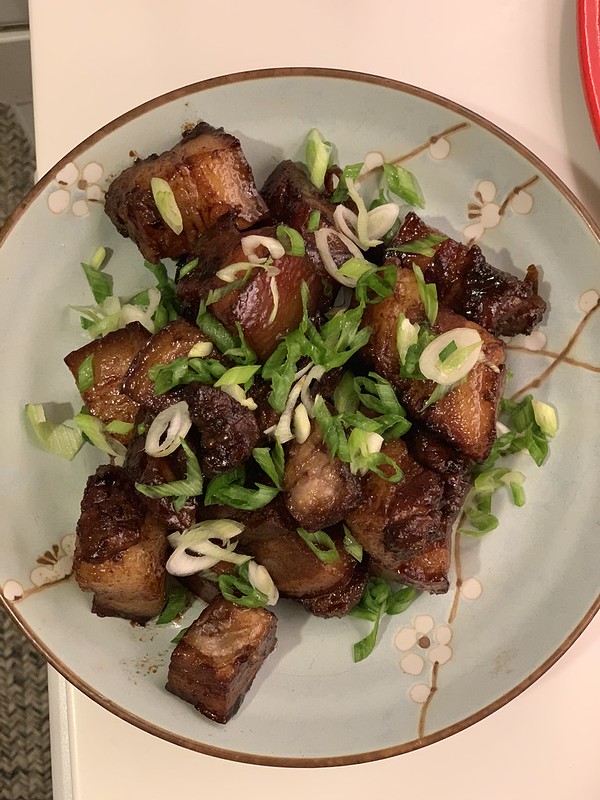I was intrigued with this roast chicken recipe from Tasty because the 450°F oven temperature was pretty high. Their goal was to make the skin crispy. I’ve always preferred a slow-cook and would always baste the chicken and flavor the inside with aromatics; I suppose those steps never really gave me crispy skin, but I’ve always thought it was just the way it was.
How can you have crispy skin and still a juicy meat? I can now tell you that this is how.

To catch all the chicken juice, I opted for sweet potatoes. I peeled them and sliced them in large rounds. I threw in half a red onion and leftover chopped celery just because they’re all I had left in the fridge. I was skeptical about how the potatoes would get cooked without extra seasoning, but I held off on adding any extras–the chicken juice was actually enough to cook and season the potatoes!

If you’re using other heartier root vegetables, feel free to return them to the oven if they still need a few minutes of roasting; a little olive oil and more seasoning probably won’t hurt either.

Ingredients:
1 whole air-chilled chicken
salt, pepper
some vegetables for roasting1. A day ahead of roasting your chicken, dry it thoroughly with paper towels, including inside the cavity. Season well and rub all over with salt and pepper, including inside the cavity. Using a toothpick, pierce the chicken all over. Place on a baking dish and put in the fridge, uncovered, for at least 8 hours.
2. The day of roasting your chicken, take the chicken out of the fridge and let it sit in room temperature for at least an hour. Truss your chicken with butcher’s twine. Place the chicken on a rack–breast side down–where the baking pan is lined with chopped vegetables so that they can catch the chicken juice while roasting.
3. Preheat the oven at 450°F. Roast chicken for an hour. Your chicken is done when the thickest part of the leg registers at 165°F with a food thermometer. Remove from the oven and let the chicken rest for another 20 minutes.





